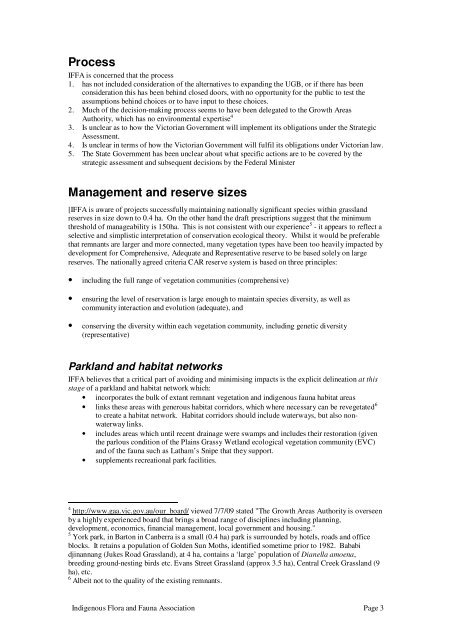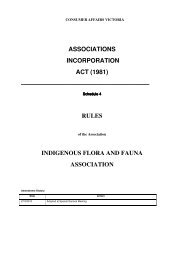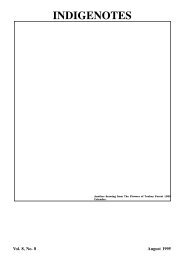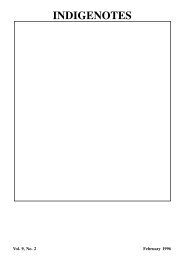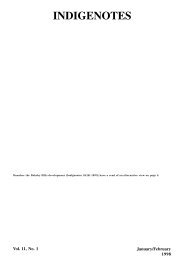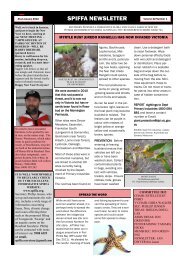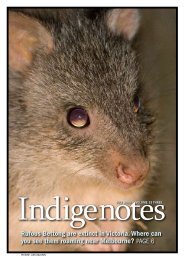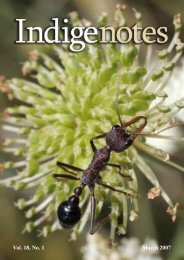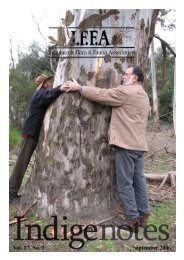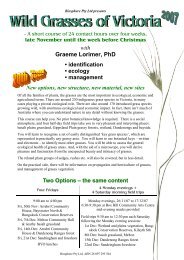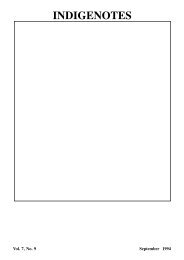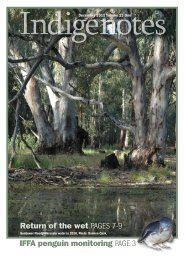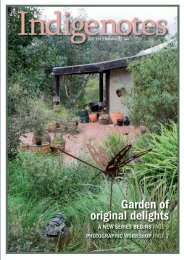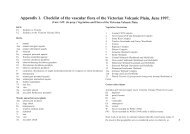IFFA UGB submission revised lo res.pdf - Indigenous Flora and ...
IFFA UGB submission revised lo res.pdf - Indigenous Flora and ...
IFFA UGB submission revised lo res.pdf - Indigenous Flora and ...
Create successful ePaper yourself
Turn your PDF publications into a flip-book with our unique Google optimized e-Paper software.
Process<br />
<strong>IFFA</strong> is concerned that the process<br />
1. has not included consideration of the alternatives to exp<strong>and</strong>ing the <strong>UGB</strong>, or if there has been<br />
consideration this has been behind c<strong>lo</strong>sed doors, with no opportunity for the public to test the<br />
assumptions behind choices or to have input to these choices.<br />
2. Much of the decision-making process seems to have been delegated to the Growth Areas<br />
Authority, which has no environmental expertise 4<br />
3. Is unclear as to how the Victorian Government will implement its obligations under the Strategic<br />
Assessment.<br />
4. Is unclear in terms of how the Victorian Government will fulfil its obligations under Victorian law.<br />
5. The State Government has been unclear about what specific actions are to be covered by the<br />
strategic assessment <strong>and</strong> subsequent decisions by the Federal Minister<br />
Management <strong>and</strong> <strong>res</strong>erve sizes<br />
[<strong>IFFA</strong> is aware of projects successfully maintaining nationally significant species within grassl<strong>and</strong><br />
<strong>res</strong>erves in size down to 0.4 ha. On the other h<strong>and</strong> the draft p<strong>res</strong>criptions suggest that the minimum<br />
th<strong>res</strong>hold of manageability is 150ha. This is not consistent with our experience 5 - it appears to reflect a<br />
selective <strong>and</strong> simplistic interpretation of conservation eco<strong>lo</strong>gical theory. Whilst it would be preferable<br />
that remnants are larger <strong>and</strong> more connected, many vegetation types have been too heavily impacted by<br />
deve<strong>lo</strong>pment for Comprehensive, Adequate <strong>and</strong> Rep<strong>res</strong>entative <strong>res</strong>erve to be based solely on large<br />
<strong>res</strong>erves. The nationally agreed criteria CAR <strong>res</strong>erve system is based on three principles:<br />
• including the full range of vegetation communities (comprehensive)<br />
• ensuring the level of <strong>res</strong>ervation is large enough to maintain species diversity, as well as<br />
community interaction <strong>and</strong> evolution (adequate), <strong>and</strong><br />
• conserving the diversity within each vegetation community, including genetic diversity<br />
(rep<strong>res</strong>entative)<br />
Parkl<strong>and</strong> <strong>and</strong> habitat networks<br />
<strong>IFFA</strong> believes that a critical part of avoiding <strong>and</strong> minimising impacts is the explicit delineation at this<br />
stage of a parkl<strong>and</strong> <strong>and</strong> habitat network which:<br />
• incorporates the bulk of extant remnant vegetation <strong>and</strong> indigenous fauna habitat areas<br />
• links these areas with generous habitat corridors, which where necessary can be revegetated 6<br />
to create a habitat network. Habitat corridors should include waterways, but also nonwaterway<br />
links.<br />
• includes areas which until recent drainage were swamps <strong>and</strong> includes their <strong>res</strong>toration (given<br />
the par<strong>lo</strong>us condition of the Plains Grassy Wetl<strong>and</strong> eco<strong>lo</strong>gical vegetation community (EVC)<br />
<strong>and</strong> of the fauna such as Latham’s Snipe that they support.<br />
• supplements recreational park facilities.<br />
4 http://www.gaa.vic.gov.au/our_board/ viewed 7/7/09 stated "The Growth Areas Authority is overseen<br />
by a highly experienced board that brings a broad range of disciplines including planning,<br />
deve<strong>lo</strong>pment, economics, financial management, <strong>lo</strong>cal government <strong>and</strong> housing."<br />
5 York park, in Barton in Canberra is a small (0.4 ha) park is surrounded by hotels, roads <strong>and</strong> office<br />
b<strong>lo</strong>cks. It retains a population of Golden Sun Moths, identified sometime prior to 1982. Bababi<br />
djinannang (Jukes Road Grassl<strong>and</strong>), at 4 ha, contains a ‘large’ population of Dianella amoena,<br />
breeding ground-nesting birds etc. Evans Street Grassl<strong>and</strong> (approx 3.5 ha), Central Creek Grassl<strong>and</strong> (9<br />
ha), etc.<br />
6 Albeit not to the quality of the existing remnants.<br />
<strong>Indigenous</strong> F<strong>lo</strong>ra <strong>and</strong> Fauna Association Page 3


